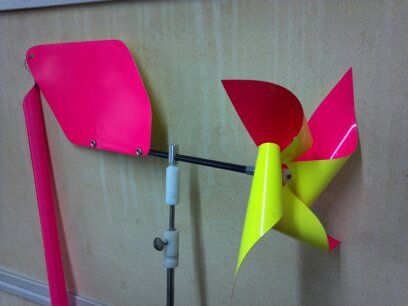Yep, it's fun !
Hi Keith
You've certainly been thinking.

I remember you saying once, "Experimenting with wind indicators is fun" or something like that.

and I agree.
My benchrest career began in 1987 and since that time, I have spent a great deal of time and money trying to develope a better way to read the wind. As most of you know, the Beggs Wind Probe has been my contribution to that end. When I set out down that long road, I wanted to develope a device that would obsolete and completely replace conventional wind flags; a device that would sense both wind direction and velocity and combine the two into a single readout called crosswind component. It took about ten years of trial and error to perfect the wind probe and I believe those in use today are darn close. They do exactly what I set out to do with one exception, they will not and do not obsolete and completely replace conventional wind flags.

I'll try to explain.

My friend and mentor Charles Huckeba was quick to recognize the advantages of the probe and began using them long ago but he always used them a bit differently than I did. Charles has always and still does to this day, use only one probe per 100 yards placing it near and lined up with a conventional flag at fifty yards. He relies on the field of vanes, ribbons and daisy wheels to tell him what is going on over the range and refers to the probe before pulling the trigger; sort of using the probe to tell him when not to shoot. Mike Conry does the same thing. You can't argue with success; however, there are those who do not like the probes, regarding them as just something that's in the way.

Among those are Gene Bukys and Mike Ratigan.

Sorry guys, I had to tell the truth but I must be quick to say that I still love you.

I believe it was Yamaha back in the sixties that coined the phrase, "Different strokes for different folks." That certainly applies to benchrest; doesn't it?
After all these years and no small amount of money blown downrange I have concluded that Mike Ratigan has written the best treatise on wind flags and reading the wind. His simple, inexpensive, easy to read flags are in my opinion the way to go. If you haven't read Mike's book, "Extreme Rifle Accuracy" you are missing out on some priceless information. Tony Boyer's book is in the same category. This is not to say that the Wind Probe is not useful, I'm just saying the probe is a valuable addition to but not a replacement for, conventional flags. I think about seven or eight of Ratigan's flags and one probe placed at fifty yards is one helluva' combination. Others may disagree.
Keith, keep thinking man, that brilliant mind of yours is awesome! We are lucky to have you in our sport.
Best regards
Gene Beggs






